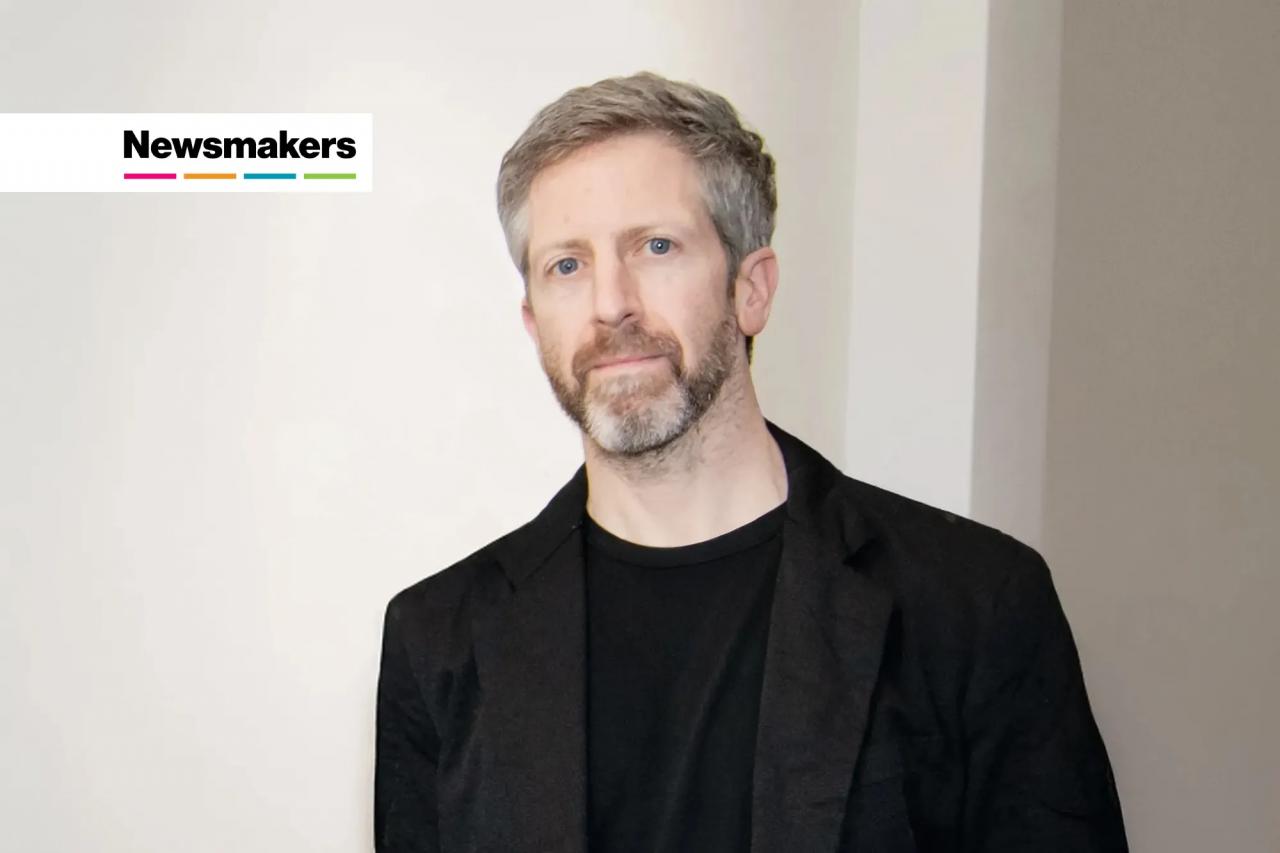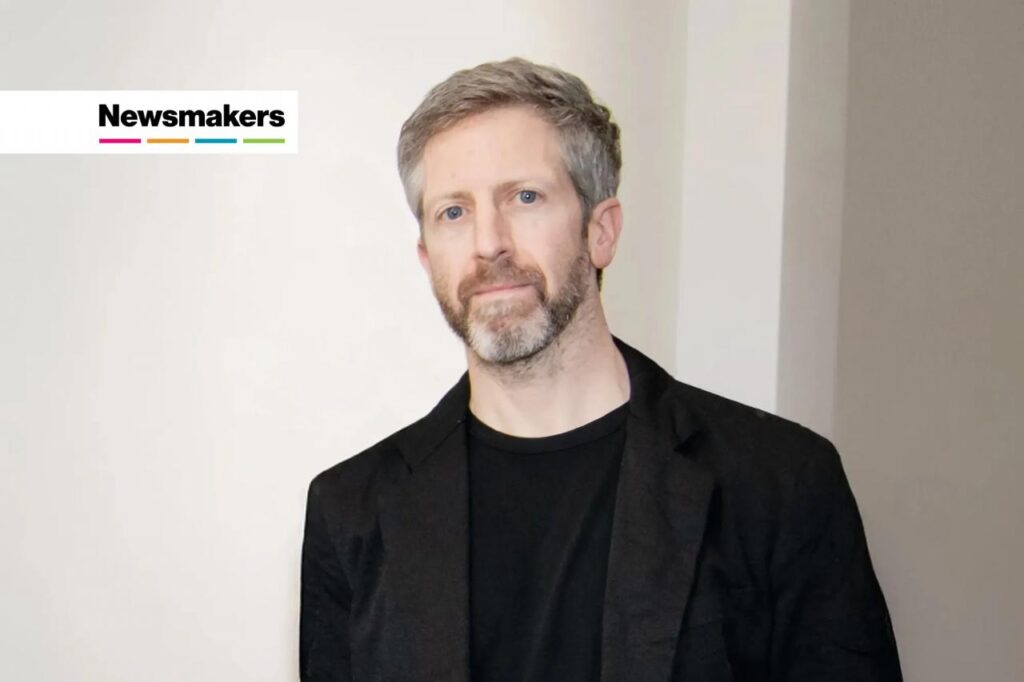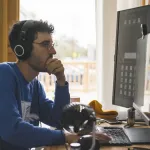
Editor’s Note: This story is part of Newsmakers, a new ARTnews series where we interview the movers and shakers who are making change in the art world.
At a time when most headlines about the art market include the words slowdown or correction, Adam Heft Berninger is opening a gallery. Located on a perfectly gritty block of Manhattan’s Lower East Side, Heft is a new gallery for artists whose practices involve “systems”—generative code, machine learning, scanners, maybe even Lego tiles—but resist the flattening label of “AI art.” That distinction is key for Berninger, who spent years working with institutions like MoMA and the Public Art Fund before launching his own curatorial platform, Tender. Now he’s betting on a physical space, on community, and on work that needs to be seen in person.
“There’s so much great work being made using these tools, and barely anyone is showing it,” Berninger told ARTnews recently. “When you look at the number of galleries focused on this kind of art, you can count them on two hands, globally.” That scarcity, he argues, has led to major misconceptions. “Online, the success rate of changing someone’s mind about AI art is basically zero,” he said. “In person? Almost 100%.” It’s the kind of analog strategy that feels radical in a time obsessed with scale: fewer screens, more conversation. One collector at a time.
The artists Berninger champions are often working with algorithms, scanners, or coded instructions, but what links them isn’t the tech—it’s the thinking. It’s the insistence on a process, a method, or a system that leaves just enough room for the unexpected. It’s a methodology, not a genre. And it’s one he believes more people would appreciate, if they could only see it up close.
ARTnews sat down with Berninger just weeks after Heft opened its doors to talk about why now, why here, and why systems-based art might be the most human kind of art there is.
This interview has been edited and condensed for clarity and concision.
ARTnews: You’ve said this isn’t an AI gallery — so what is it?
Adam Heft Berninger: It’s a contemporary art gallery. That’s it. The artists we show use the tools of our time like AI, algorithms, and scanners, but the point isn’t the technology. It’s how they think. They’re setting up systems, like rules or structures, that guide the work and allow for discovery. That could be someone writing code, or it could be someone using a flatbed scanner on a human body, square by square. It’s not about fetishizing the tool. It’s about using it to get somewhere unexpected.
You described the art as systems-based. How does that differ from what people call “AI art”?
“AI art” tends to flatten the conversation. It makes it seem like the machine is making the work. But systems art has a long history—think of Sol LeWitt or Eadweard Muybridge. There’s a structure, a methodology, and through that, the artist finds something surprising. A lot of the artists we show are closer to that lineage than to whatever Midjourney prompt someone typed in for Instagram clout.
So the term “AI artist” feels reductive to you.
Yeah, I don’t use it. I don’t call someone a “digital artist” or “AI artist.” I call them an artist. The art world didn’t call Andy Warhol a “screenprint artist,” even though he uses that medium. Same thing here. In 20 years, no one’s going to talk about this as a digital art movement. They’ll talk about the artists.
If the tools are digital, why is having a physical gallery so important?
Because context matters. Most people’s understanding of this work is through Instagram, where the conversation is either shallow or hostile. But in person, with time and conversation, it shifts. I’ve seen skeptics walk in and leave with a completely different view. Physical form helps that. These aren’t just images on a screen. We work hard with artists to bring their work into physical form—prints, sculptures, fabrications—so people can live with it.
Why open now, when the market is this shaky?
Honestly? I’ve been trying to open a space for two years. The timing lined up with the space and a partner. But philosophically, it feels urgent. People are tired of doom narratives about technology. And there’s amazing work being made that isn’t being shown. If I can help change that even a little, I want to. Plus, I think there’s a hunger for something different—new artists, new types of work, shown in new ways. If we do things differently enough, people will take notice.
You’re not chasing scale online—you’re aiming for depth in person. That’s unusual right now.
Yeah, we’re not trying to blast this out to 10,000 people on the internet. We’re trying to have real conversations with a few people every day. That kind of engagement scales more slowly, but it’s more meaningful. And honestly, that’s where change happens.
What’s the programming strategy? You’re changing shows quickly, right?
We’ll have new shows every three to four weeks, plus events in between. That keeps the energy high, and it brings people back. And because this kind of work has been underrepresented, we have a lot to show. There’s a backlog of great work that deserves a platform. So the pace is part of the mission.
Is price point part of accessibility for you?
Absolutely. Right now, we’re showing works priced from $2,000 to $10,000, sometimes even lower for digital-only pieces. One series had two unique prints for $2,000 to $4,000, and 128 other digital works from that same series were sold online for $100 each. The idea is: if someone connects with a piece, there should be a way for them to own it.
Would you show an artist who doesn’t use any tech at all?
If the methodology fits—absolutely. We’re looking at artists who use systems. That could be ceramic tiles or even Legos. If there’s a process behind it that leaves room for discovery, I’m interested.


